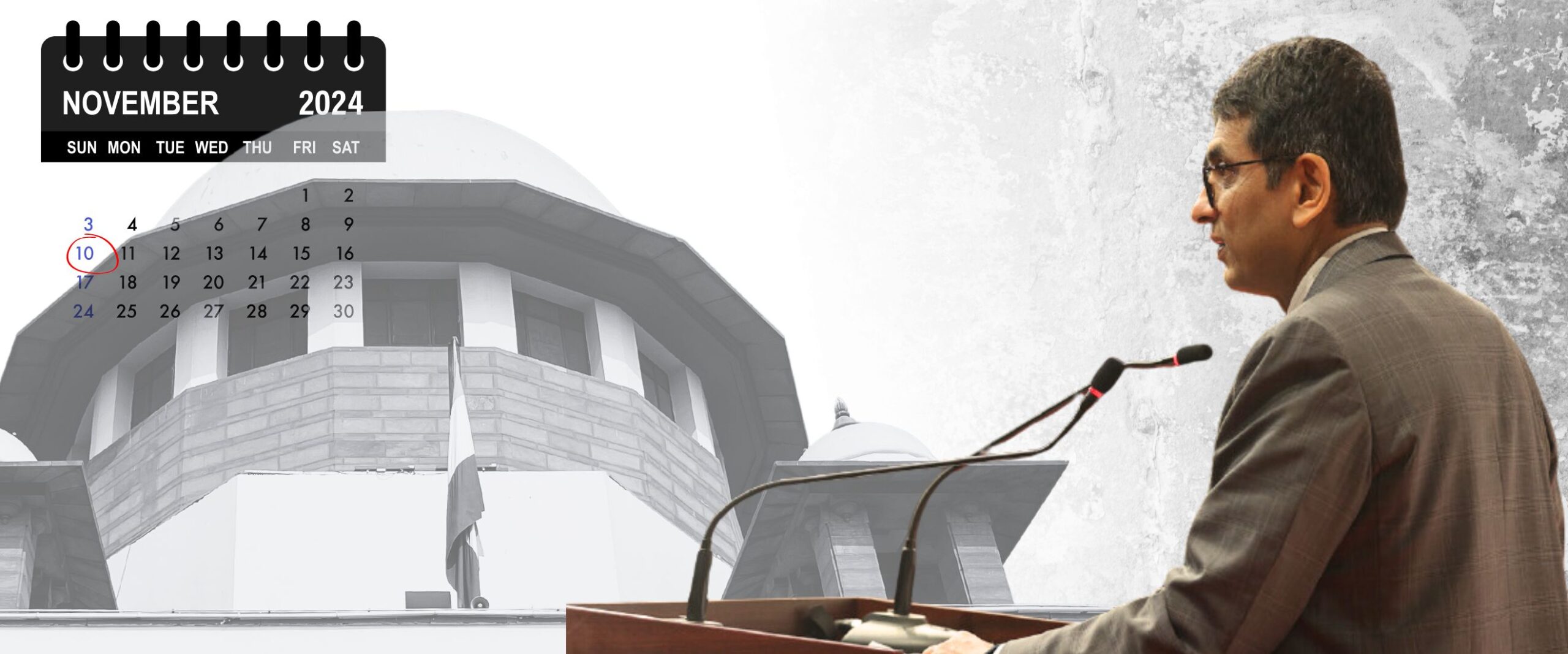Analysis
And it’s a wrap
In his last week in office as Chief Justice, D.Y. Chandrachud characteristically drew a neat line under unfinished business

Eight and a half years since he first took oath in the Supreme Court of India, Dhananjay Y. Chandrachud bid farewell to the institution on Friday. Amid swirling questions about his legacy as Chief, his final week in Court saw several chapters neatly fold over themselves.
When the week started, five decisions were pending out of the 16 Constitution Benches that the outgoing Chief constituted and led. All of them had a convoluted litigious history that went back several years, if not decades. For instance, when the majority ruled that all private property could not be a “material resource of the community” in Property Owners, it brought an end to the saga in a matter that had been with the Court since the early 1990s.
The 16 cases that were heard by benches of five or more judges were on matters as diverse as the political fate of Jammu & Kashmir to the question of whether non-signatory group companies can be bound by arbitration agreements. What ties them together is their immense significance to aspects of the country’s political, social and economic life. In any discussion on legacy, at least two headlines emerge from Justice Chandrachud’s work with Constitution Benches: his proactiveness in formation and following through on crucial matters that were gathering dust; and the manner in which he exercised his Master of Roster powers in constituting those benches.
In the final week, the Chief’s Court also heard applications filed in some of its recent judgements. One of these was Sukanya Shantha. When the judgement was pronounced in October, it was celebrated for the Court’s engaged discussion on discrimination faced by Denotified Tribe communities in prisons. The Court had mandated that the caste column in prison registers be deleted. But activists and researchers had noted that the deletion of caste data would make it difficult to address caste-related disparities in prisons. By allowing the application for modification and clarifying that the National Crime Records Bureau’s caste data collection exercise wouldn’t be hampered, Justice Chandrachud plugged the hole in an otherwise progressive judgement.
Fittingly, given the outgoing Chief’s penchant for suo moto cases, this week also some action in NEET-UG and Kolkata hospital matters. In July 2024, a Division Bench led by the Chief had refused to cancel the NEET-UG medical exam due to insufficient evidence of a “systemic leak”. This week, the bench sat in-chambers and disposed of a review petition filed against the decision. Outraged by the rape and murder of a young doctor in Kolkata’s R.G. Kar Hospital, the Court had taken it on itself to supervise the CBI investigation and establish a National Task Force for doctor safety. The NTF, which had been established on the first day of hearings in August, finally submitted its report this week.
One parting decision was especially appropriate to cap off a career that has been marked by strongly worded judgements that reflect liberal thinking and rhetoric. By upholding the constitutionality of the Uttar Pradesh Madarsa Board Act, a Chandrachud-led bench overturned a High Court decision which diluted the functioning of the state’s 16,000 madarsas by mandating that all their 17 lakh students be accommodated in the mainstream educational system. (There have also been occasions where Justice Chandrachud’s liberal rhetoric has only served to preface illiberal conclusions, as contended by researcher Alok Prasanna Kumar.)
The press attention around the Chief’s retirement has been unprecedented. One of many administrative reforms Justice Chandrachud was passionate about was improving the public’s access to the Court. In that respect, at least, he has walked the talk (with the flip-side being an increase in institutional posturing). On the weightier question of whether the Supreme Court quietly capitulated to an all-powerful executive during his tenure, perhaps it is a bit premature for the answer to be etched in black and white. It is a conflicted legacy, no doubt, and one has to wait to see how history will judge it.
This article was first featured in SCO’s Weekly newsletter. Sign up now!
